Did you know that there are Plants that Look like Monstera but are Not? Read on to find out all about these incredible plants now!
If you want something unique and beautiful in your home, you may consider adding Plants that Look like Monstera but are Not! Follow our post to learn about these incredible alternatives.
Here are Plants that Look like Aloe Vera But are Not
Plants that Look like Monstera but are Not
1. Philodendron Pedatum
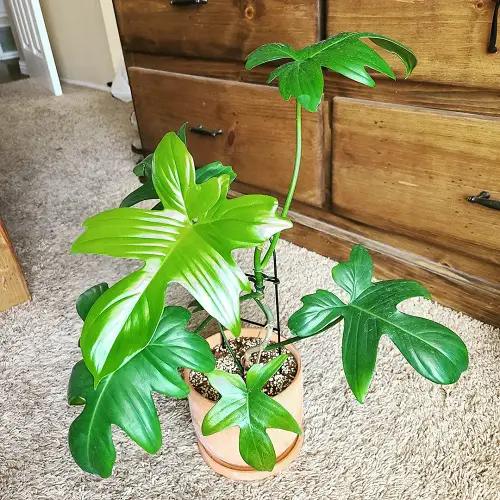
Botanical Name: Philodendron pedatum
Commonly known as the split-leaf philodendron, it resembles the monstera plant with its distinctive lobed leaves. This tropical houseplant features elegant, deeply cut foliage
2. Camposportoanum

Botanical Name: Philodendron camposportoanum
Philodendron camposportoanum, often compared to the monstera plant, shares a resemblance with its distinctive foliage. It has large cut leaves.
Learn How to Grow Philodendron Red Emerald
3. Squamiferum
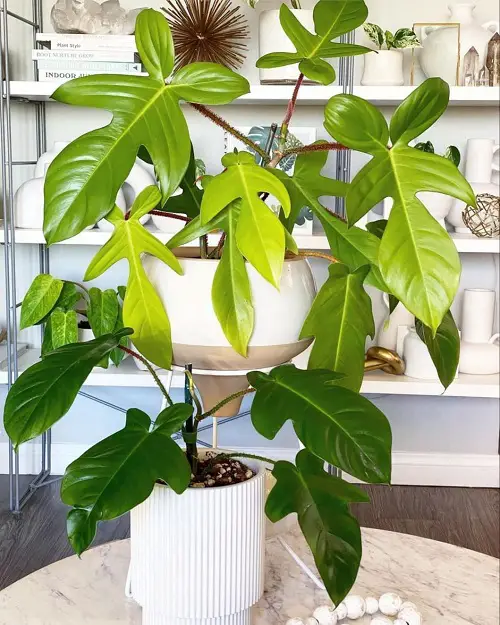
Botanical Name: Philodendron squamiferum Poepp.
This one showcases lush, heart-shaped leaves exhibit a striking resemblance to the monstera leaves. It also sports fuzzy red stems.
Learn about Growing Philodendron cordatum
4. Philodendron Billietiae
Botanical Name: Philodendron billietiae
The plant has elongated and slender leaves, which come with Monstera-like fenestrations. This variety gets quite large, so it is better to provide it with a bigger space.
5. Philodendron Bipennifolium

Botanical Name: Philodendron bipennifolium
Also known as the “Two-Pinnate Philodendron,” this cultivar captures the essence of Monstera. You can create a forest-like vibe by hanging it from baskets.
6. Philodendron Tortum
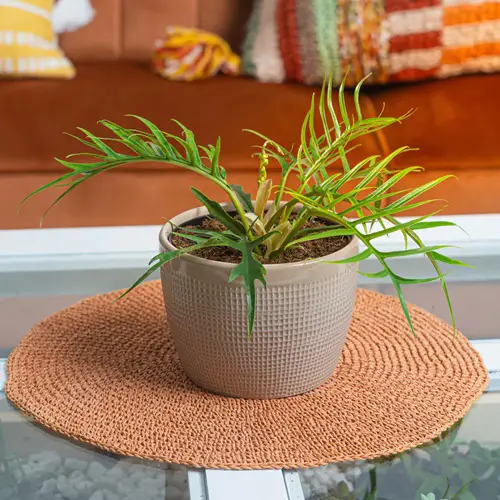
Botanical Name: Philodendron Bipinattifidum
With its unique and spiraled leaf shape, this is an eye-catching choice in your plant collection. The overall appearance will definitely remind you of Monstera.
7. Panduriforme

Botanical Name: Philodendron panduriforme
It has deep green leaves and an elegant form that shares a subtle resemblance with the Monstera. Its lush foliage and climbing nature makes it great for corners.
8. Philodendron Pluto

Botanical Name: Philodendron Pluto
If you are a hybrid plant enthusiast and love glossy textured leaves, this one should be your first choice. The toothed leaf pattern resembles Monstera’s appearance.
9. Mayoi
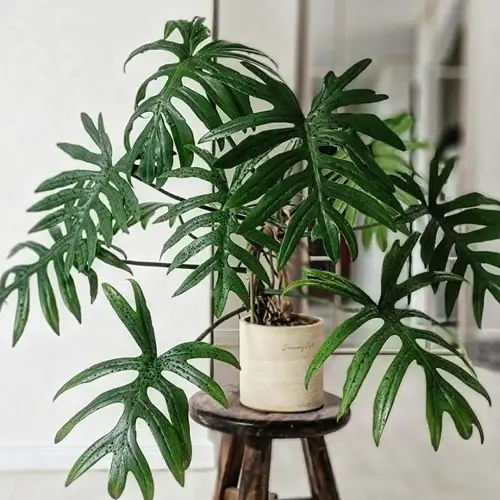
Botanical Name: Philodendron mayoi
Philodendron Mayoi boasts large leaves that have deep lobes with a glossy green hue. Its rosette arrangement creates a frilly appearance and offers a unique charm like monstera.
Learn How to Grow Philodendron Mayoi
10. Lacy Tree Philodendron
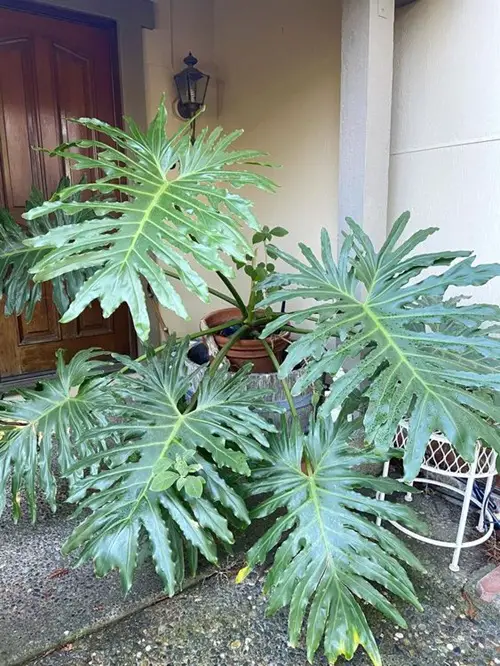
Botanical Name: Thaumatophyllum bipinnatifidum
Known for its large, lobed leaves, the Lacy Tree Philodendron is similar to the Monstera’s fenestrated leaves. An ideal choice for your indoor and outdoor decoration.
11. Mini Monstera
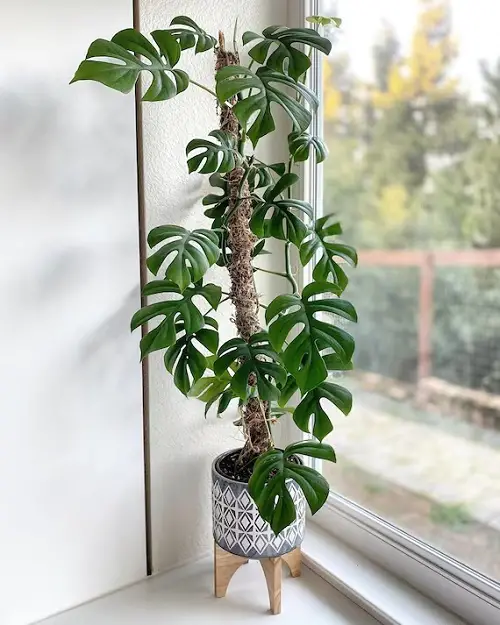
Botanical Name: Rhaphidophora Tetrasperma
If you want a Monstera look-alike for the small table tops and corners of your house, this is all you need. Its split leaves of this cultivar resemble Monstera’s fenestration.
12. Split-Leaf Philodendron
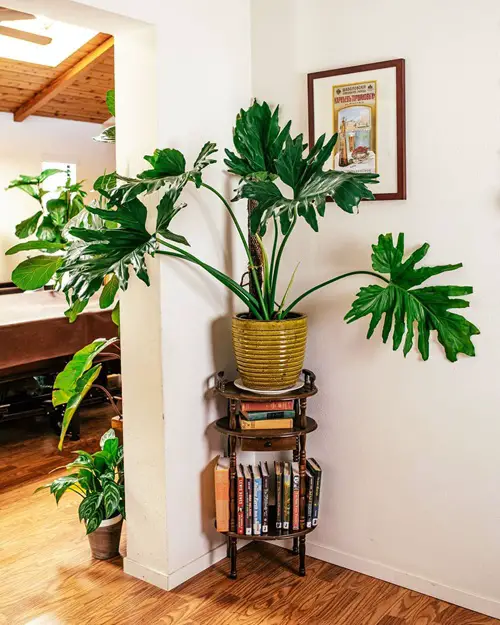
Botanical Name: Philodendron Selloum
Native to warm climates, this is the perfect choice for your warm, cozy rooms. Its broad, deeply lobed leaves and fenestration pattern closely resemble those of the Monstera
13. Alocasia
Botanical Name: Alocasia spp.
Alocasia has arrow-shaped leaves and shares a tropical look similar to the Monstera. Its lush foliage and unique leaf shapes make it the best addition to any indoor garden.
Look at the Different Alocasias in Water
14. Anthurium Fingers

Botanical Name: Anthurium pedatoradiatum
Its unique charm comes from its leaves that are deeply divided, looking like outstretched fingers. A Great pick for shelves and tabletops.
15. Variegated Mini Monstera
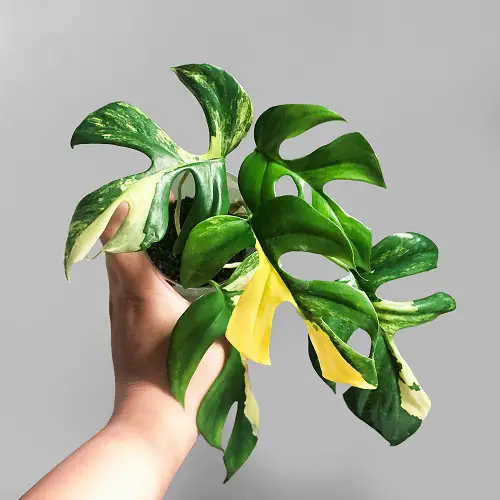
Botanical Name: Rhaphidophora tetrasperma ‘Variegata’
If you want a version of Mini Monstera with a variegated appearance, go for this one. Plus, this is best for your small tabletops!
16. Spider’s Web Fatsia

Botanical Name: Fatsia japonica ‘Spider’s Web’
Also known as Japanese Aralia, it is a dense, green shrub with broad, dark green leaves having lots of white speckles. Its pattern changes with seasons and plant’s age.
17. Dragon Tail Plant
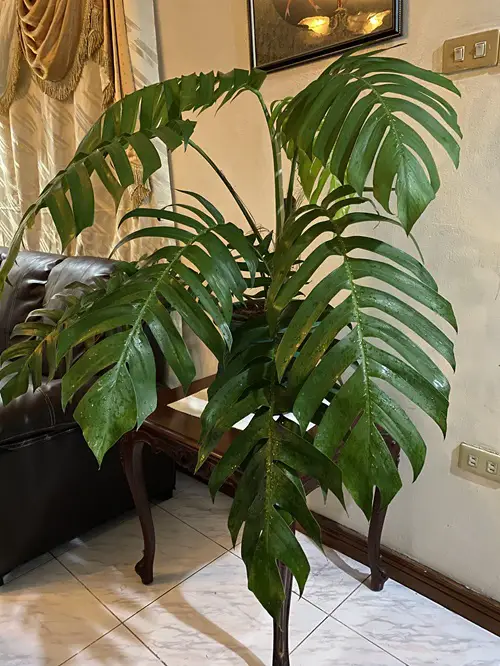
Botanical Name: Epipremnum pinnatum
It boasts large, glossy leaves with iconic splits and perforations. This easy-to-care-for plant is ideal for indoor spaces, offering a touch of tropical elegance.




